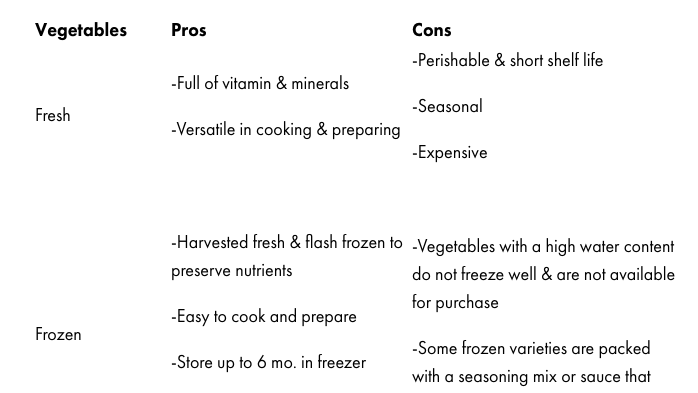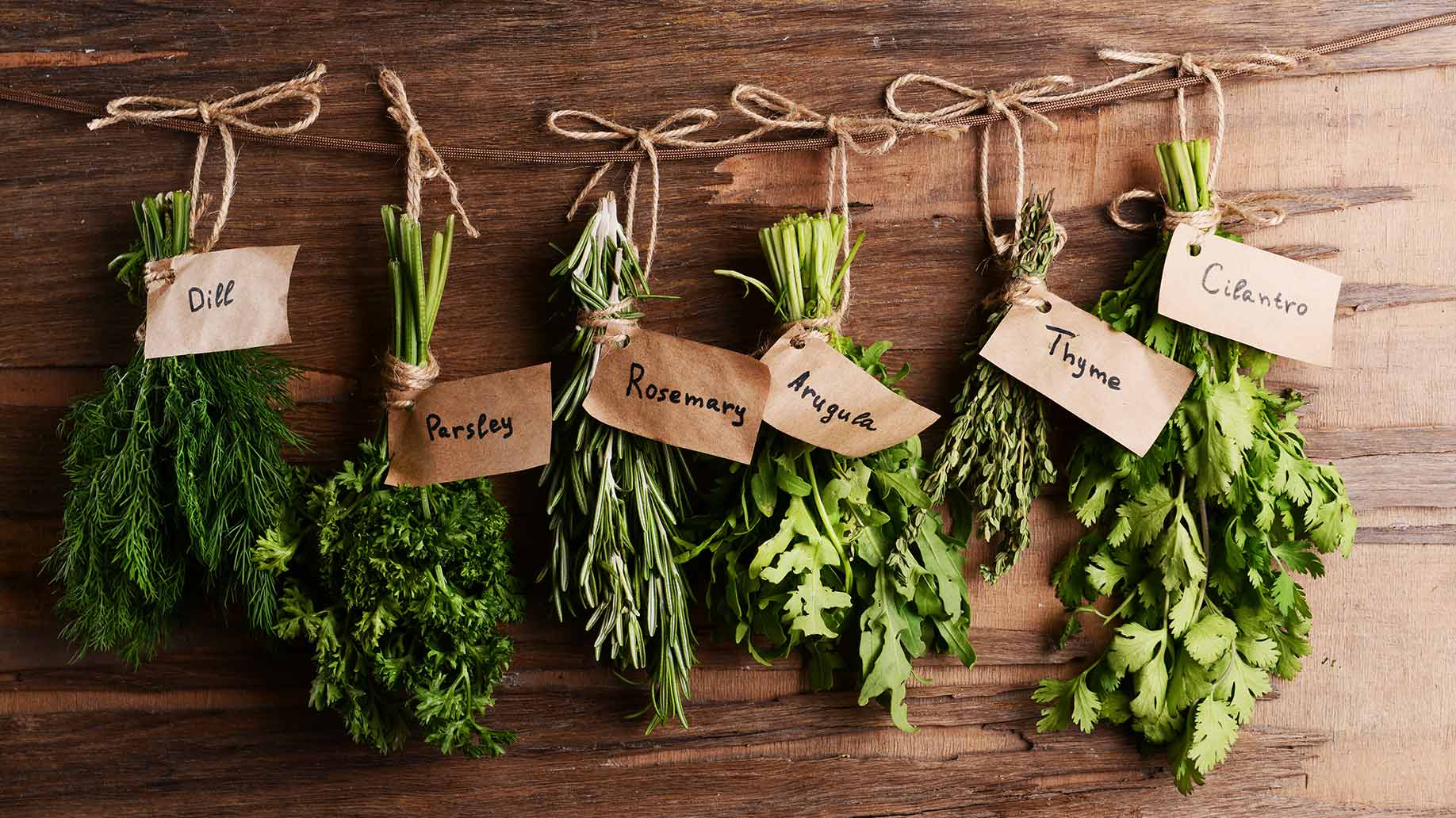Q: How does the nutritional value of frozen, canned, and fresh vegetables compare to each other?
A: Vegetables are primarily available in 3 ways of purchasing. The nutritional value of frozen, canned, and fresh vegetables are very similar yet mildly different, yet there are pros and cons to each type of vegetable for purchasing. Ultimately it depends on your lifestyle when it comes to storing, preparing, and cooking meals. It is recommend to eat 2-3 cups of vegetables a day.
| Vegetables | Pros | Cons |
| Fresh | -Full of vitamin & minerals
-Versatile in cooking & preparing |
-Perishable & short shelf life
-Seasonal -Expensive |
| Frozen | -Harvested fresh & flash frozen to preserve nutrients
-Easy to cook and prepare -Store up to 6 mo. in freezer -Less waste compared to fresh |
-Vegetables with a high water content do not freeze well & are not available for purchase -Some frozen varieties are packed with a seasoning mix or sauce that contains extra calories & sodium -Texture change |
| Canned |
-Pasteurized for a longer shelf life -Easy to cook & prepare -Cheaper in price -Allows the availability to consume veggies all year long |
-Contains added Salt & Sodium for preserving
-Heat from pasteurization may decrease vitamin & mineral content – Texture & flavor change |
If you have been told by a Doctor or Registered Dietitian that you need to watch your salt or sodium intake, then frozen or fresh vegetables may be a better option for you.
*Tip: To reduce the sodium content of canned vegetables, drain the liquid from the inside of the can and rinse the vegetables with water. Or look for ‘low-sodium’ versions.
Frozen vegetables are becoming more popular because of their freezer shelf life and ease of cooking by steaming in the microwave.
*Tip: Add fresh or frozen vegetables such as broccoli florets into a microwave safe bowl with lid and cook for 3 minutes for perfectly steamed veggies for you next meal.
Purchase fresh vegetables in season or in bulk quantities. When vegetables are in season, they are cost efficient and last longer. If you purchase vegetables in bulk you can always freeze or can fresh veggies at home using the food safe techniques for them to last longer.
Vegetables come in all shapes, sizes, colors, and ways to purchase them. And if you are feeling up to it, you can always grow your own! Overall, it does not matter how you have them, it is best to always eat your veggies!


